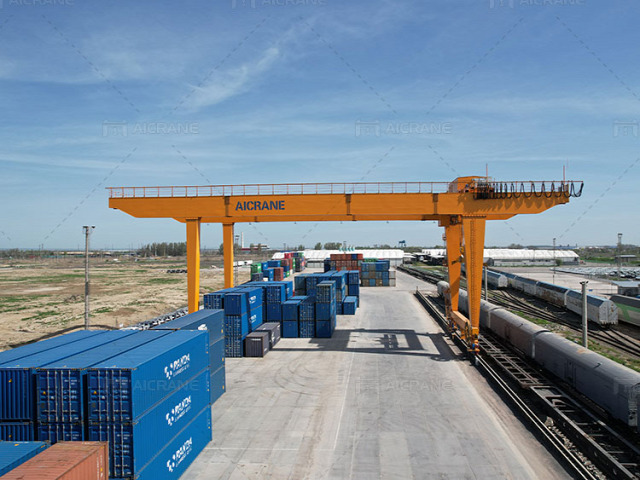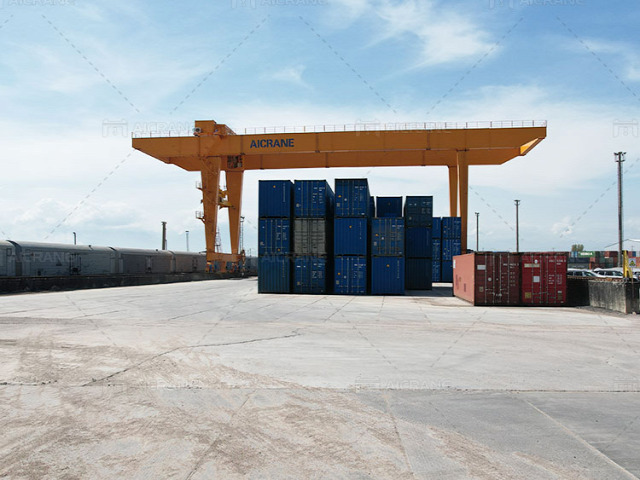Container handling gantry cranes are vital for efficient cargo operations at ports, terminals, and intermodal facilities. These cranes are specifically designed to lift, move, and stack heavy containers with precision. A key parameter that determines their effectiveness is their capacity. Understanding the capacity of container handling gantry cranes involves examining the lifting ability, span, and operational considerations. This article explores these factors, their applications, and the importance of choosing the right capacity for specific needs.

What is Crane Capacity?
The capacity of a container handling gantry crane refers to the maximum load it can safely lift. This is typically measured in tons and can range from 10 tons to over 100 tons, depending on the crane type and application. It encompasses the weight of the container as well as any additional equipment or rigging used during lifting.
Factors Influencing Gantry Crane Capacity
Several factors influence the capacity of a container handling gantry crane, including:
-
Crane Design:
-
Single Girder vs. Double Girder: Double girder cranes generally offer higher capacities due to their robust design.
-
Structure Material: High-grade steel or advanced composites can support heavier loads.
-
-
Span:
-
The distance between the legs of the crane influences stability. Wider spans may reduce capacity if not properly engineered.
-
-
Lifting Mechanism:
-
Modern cranes use advanced hoists and trolleys that contribute to higher capacity.
-
-
Load Distribution:
-
Proper load distribution across the crane’s span ensures efficient lifting.
-
-
Operating Environment:
-
Cranes used in harsh weather conditions may have reduced operational capacity due to safety considerations.
-
-
Work Duty Classification:
-
Cranes designed for continuous operations in busy terminals (A6 or A7 duty) are built with higher capacity to withstand repeated use.
-

Common Capacities of Container Handling Gantry Cranes
-
Small Cranes (10-30 Tons):
-
Ideal for small terminals, warehouses, and intermodal yards.
-
Used for light container handling or stacking in less busy environments.
-
-
Medium Cranes (30-50 Tons):
-
Suitable for medium-sized ports or logistics hubs.
-
Efficient for handling standard 20-foot and 40-foot containers.
-
-
Large Cranes (50-100+ Tons):
-
Essential for large-scale operations in major ports.
-
Can lift oversized or fully loaded containers.
-
Applications of Gantry Cranes Based on Capacity
-
Low-Capacity Cranes: Used for moving empty containers or light cargo in storage facilities.
-
Medium-Capacity Cranes: Commonly found in regional ports managing standard container loads.
-
High-Capacity Cranes: Essential for transshipment hubs or ports handling heavy cargo containers, such as reefer units or special cargo.
Selecting the Right Capacity
Choosing the correct capacity for a container handling gantry crane is crucial for operational efficiency. Consider the following:
-
Operational Needs:
-
Analyze the types of containers to be handled (e.g., empty, loaded, oversized).
-
-
Terminal Layout:
-
Account for the span required to cover container rows and stacking heights.
-
-
Future Growth:
-
Plan for potential increases in cargo volume to avoid frequent upgrades.
-
-
Compliance and Safety:
-
Ensure the crane’s capacity adheres to international safety standards.
-
Technological Advancements in High-Capacity Cranes
Modern container handling gantry cranes are equipped with features that enhance their capacity and usability:
-
Anti-Sway Systems:
-
Reduces load sway, enabling higher precision during heavy lifts.
-
-
Automated Controls:
-
Improves lifting efficiency and reduces human error.
-
-
Energy Efficiency:
-
Hybrid and electric cranes are designed to handle high capacities with reduced environmental impact.
-
-
Remote Monitoring:
-
Allows operators to track performance and load capacity in real-time.
-
Case Studies of High-Capacity Gantry Cranes
-
Large Port in Asia:
-
Installed 100 ton gantry cranes to handle increased container traffic.
-
Resulted in a 30% improvement in operational efficiency.
-
-
European Intermodal Hub:
-
Adopted 50-ton capacity cranes for seamless container transfers between rail and road.
-
Enhanced logistics flow and reduced congestion.
-
Importance of After-Sales Support
When investing in a container handling gantry crane, after-sales support is as important as the crane’s capacity. Reliable suppliers offer services such as:
-
Installation and Commissioning:
-
Ensuring the crane operates at full capacity from day one.
-
-
Maintenance Plans:
-
Regular checks to prevent capacity-related failures.
-
-
Capacity Upgrades:
-
Modular designs allow for capacity enhancements as operational needs grow.
-
Conclusion
Understanding the capacity of container handling gantry cranes is essential for optimizing port operations. Factors such as design, span, and lifting mechanisms influence a crane’s capacity. Matching the right capacity with operational needs ensures efficiency, safety, and long-term performance. With technological advancements and reliable after-sales support, high-capacity gantry cranes continue to play a pivotal role in modern logistics and cargo handling.

